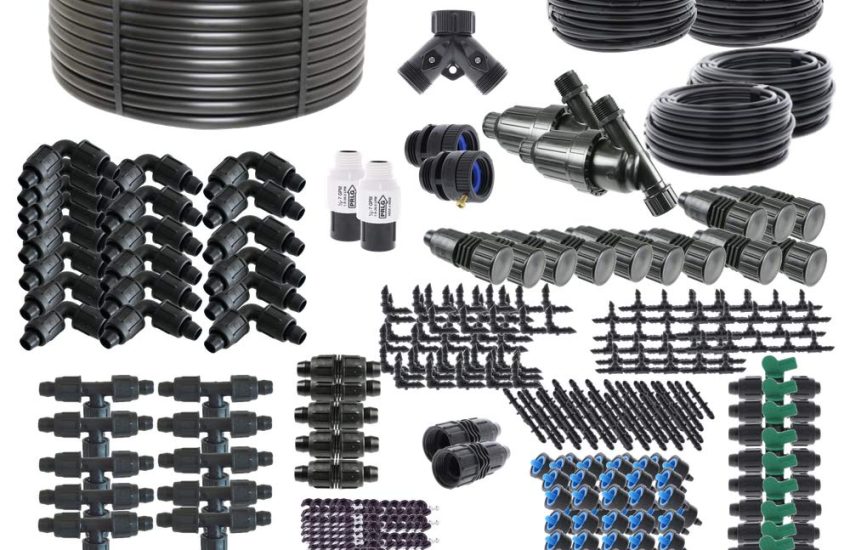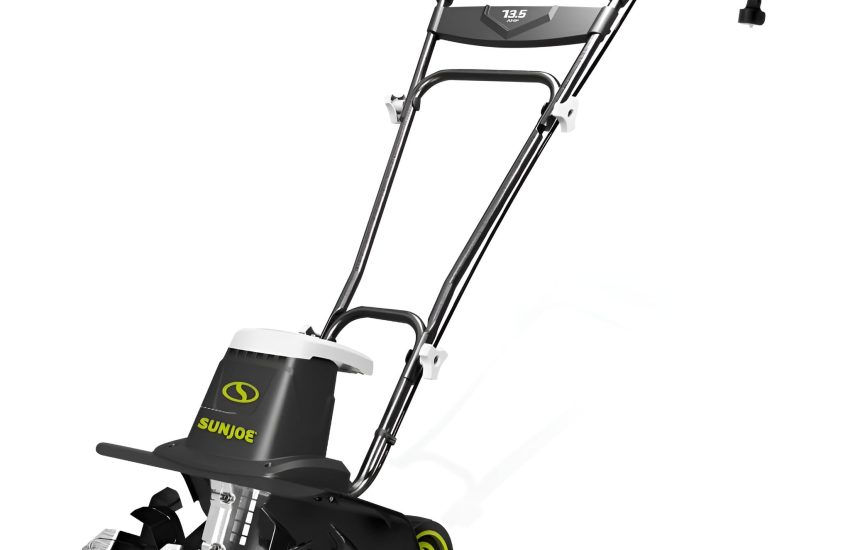Our Review of the Best Grow Bags for Tomatoes: Top Picks for 2025 Season
We independently select all products and services. If you click through links we provide, Plant Native may earn a commission with no extra cost to you.
Grow bags offer gardeners a flexible and space-efficient solution for cultivating tomatoes. These lightweight, portable containers have gained popularity among urban gardeners and those with limited outdoor space. Grow bags provide excellent drainage and aeration for roots, promoting healthy plant growth and bountiful harvests.
Tomatoes thrive in grow bags due to their deep root systems and need for consistent moisture. The fabric construction of grow bags allows excess water to drain while preventing root rot. This makes them an ideal choice for tomato cultivation, especially in areas with poor soil quality or limited gardening space.
When selecting grow bags for tomatoes, consider factors such as size, material durability, and handles for easy mobility.
The ideal capacity for tomato grow bags ranges from 5 to 20 gallons, depending on the variety.
We tested various grow bags to identify the best options for cultivating healthy, productive tomato plants.
Best Grow Bags for Tomatoes
We’ve carefully evaluated and selected the top grow bags for tomatoes. Our list includes options that provide excellent drainage, promote healthy root growth, and are durable enough to last multiple growing seasons. These grow bags offer a convenient and effective solution for cultivating tomatoes in various settings.
Cavisoo 10 Gallon Grow Bags
We recommend these versatile grow bags for their durability, excellent drainage, and convenient design features.
Pros
- Sturdy construction with reinforced handles
- Promotes healthy root growth
- Includes viewing window for easy monitoring
Cons
- Fabric may fade over time
- Requires more frequent watering than traditional pots
- Limited color options
We found these Cavisoo grow bags to be a game-changer for our container gardening needs. The thick non-woven fabric feels substantial and has held up well through multiple growing seasons.
We appreciate how the breathable material allows for excellent drainage, preventing waterlogged roots and promoting healthier plant growth.
The reinforced handles are a standout feature. We’ve moved these bags around our garden with ease, even when filled with soil and mature plants. The X-shaped stitching provides extra support, giving us confidence when lifting or repositioning the bags.
One aspect we particularly enjoy is the visualization window. It’s incredibly helpful for determining when our potatoes or other root vegetables are ready for harvest without disturbing the entire plant. However, we did notice that the window doesn’t have a clear covering, so soil can spill out if not careful.
These bags have proven versatile for various crops. We’ve successfully grown tomatoes, potatoes, and even some herbs in them. The 10-gallon size offers ample space for root development while still being manageable for small spaces or balconies.
Labulak 10 Gallon Grow Bags
We recommend these versatile grow bags for gardeners looking to cultivate potatoes, tomatoes, and other vegetables in a space-saving, convenient manner.
Pros
- Innovative viewing flap for easy root monitoring
- Includes plant growth record cards
- Durable and reusable fabric construction
Cons
- Limited color options
- May require frequent watering
- Slightly pricier than basic grow bags
We’ve been using these Labulak 10 Gallon Grow Bags for our vegetable garden, and they’ve proven to be a game-changer. The fabric material allows for excellent drainage and air pruning of roots, promoting healthier plant growth.
We particularly appreciate the viewing flap at the bottom, which lets us check on root development without disturbing the plants.
The included plant growth record cards are a thoughtful addition. We’ve found them helpful in tracking our plants’ progress throughout the season. It’s a great feature for both novice and experienced gardeners alike.
These bags are sturdy and well-constructed. We’ve used them for both indoor and outdoor gardening, and they’ve held up well against the elements. The 10-gallon capacity is perfect for growing potatoes, tomatoes, and other vegetables that require ample root space.
While slightly more expensive than basic grow bags, we believe the added features justify the cost. The ease of use and durability make them a worthwhile investment for serious home gardeners. Overall, these Labulak grow bags have greatly simplified our container gardening experience.
Betereap Upside-Down Tomato Planter
We recommend this innovative hanging planter for space-conscious gardeners looking to grow tomatoes and other vegetables in small areas.
Pros
- Large zipper planting hole for easy plant insertion
- Durable carabiner clip for secure hanging
- Versatile for various fruits, vegetables, and herbs
Cons
- May require frequent watering
- Can be heavy when filled with soil
- Limited growing space for larger tomato varieties
After trying out the Betereap Upside-Down Tomato Planter, we were impressed by its clever design. The wide zipper opening made planting our tomato seedlings a breeze, and we appreciated the anti-scratch feature that protected the stems from damage.
We found the carabiner clip to be a sturdy addition, allowing us to easily hang and move the planter as needed. The 4.5-gallon capacity provided ample space for our plants to grow, though we did notice it became quite heavy when filled with moist soil.
During our use, we observed that the breathable fabric promoted healthy root growth. However, we needed to water the plants more frequently than expected, as the soil tended to dry out quickly. Despite this minor inconvenience, we were pleased with the space-saving aspect, which allowed us to create a small hanging garden on our balcony.
JJGoo 10-Gallon Grow Bags
We recommend these versatile grow bags for tomato enthusiasts seeking an affordable and practical container gardening solution.
Pros
- Durable PE material withstands outdoor use
- Convenient handles for easy mobility
- Ventilation holes promote healthy root growth
Cons
- May require more frequent watering than traditional pots
- Limited color options
- Soil can spill during transportation
We’ve been using these JJGoo grow bags for our tomato plants, and they’ve exceeded our expectations. The 10-gallon capacity provides ample room for root development, resulting in healthier plants and better yields. The sturdy PE material has held up well against the elements, and we appreciate the added durability.
The ventilation holes on the sides and bottom are a game-changer. Our tomato roots have thrived in the well-aerated environment, leading to stronger plants overall. We’ve noticed less root rot and better drainage compared to our previous container setups.
One feature we particularly love is the flap window. It’s incredibly useful for checking on potato growth or harvesting root vegetables without disturbing the entire plant.
The strong handles make moving these bags a breeze, even when fully loaded with soil and plants. We’ve found them perfect for rearranging our garden layout or bringing plants indoors during harsh weather.
Homyhoo Upside Down Planters
We recommend these versatile hanging planters for gardeners looking to maximize space and grow tomatoes or herbs with minimal effort.
Pros
- Space-saving upside-down design
- Multiple side openings for additional plants
- Durable fabric promotes healthy root growth
Cons
- Small planting holes can be challenging
- Requires frequent watering
- Limited capacity for larger plants
We tested these Homyhoo hanging planters and found them to be a clever solution for small-space gardening. The upside-down design allows tomatoes to grow downward, while the 12 side openings accommodate herbs or strawberries. This makes efficient use of vertical space on balconies or patios.
The fabric construction impressed us with its durability and breathability. It promotes air pruning of roots, leading to a healthier root system. We noticed our plants seemed less prone to becoming root-bound compared to traditional pots.
One drawback we encountered was the small size of the planting holes. Inserting larger seedlings proved challenging and required some finesse to avoid damaging the plants. We recommend starting with smaller seedlings or propagating directly in the planter.
These planters do dry out quickly, especially in hot weather, so daily watering became necessary to keep our plants thriving. While this means more attention is required, it also provides good drainage and reduces the risk of overwatering.
We appreciated the included metal hooks for easy hanging. The green color blends well with foliage, creating an attractive display. For those with limited gardening space or issues with ground-level pests, these planters offer a practical and fun way to grow your own produce.
Buying Guide
When selecting grow bags for tomatoes, several key factors should be considered. We recommend focusing on size, material, drainage, and durability.
Size Matters
Choose a grow bag that provides adequate space for your tomato plants. We suggest:
- Determinate tomatoes: 5-10 gallon bags
- Indeterminate tomatoes: 10-20 gallon bags
Larger bags allow for better root development and increased yields.
Material Considerations
The material of your grow bag affects plant health and longevity. We find these options most effective:
- Fabric: Breathable, promotes air pruning
- Plastic: Retains moisture, lighter weight
Drainage is Crucial
Proper drainage prevents waterlogging and root rot. Look for:
- Multiple drainage holes
- Raised bottom design
Durability for Long-Term Use
Invest in grow bags that will last multiple seasons. We recommend checking for:
- UV-resistant materials
- Reinforced handles and seams
Ease of Use
Consider features that make gardening more convenient:
- Handles for mobility
- Fold-flat design for storage
By prioritizing these aspects, we can select grow bags that provide optimal conditions for tomato growth and make gardening more enjoyable.







